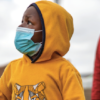
A report stemming from NIDS-CRAM wave 1, a project consisting of work by a national consortium of 30 social science researchers from five South African universities. The consortium will conduct the National Income Dynamics Study (NIDS) Coronavirus Rapid Mobile Survey (CRAM) over the course of May – December 2020. The NIDS-CRAM project exists to collect, analyze and disseminate data on a broadly representative sample of South African individuals, and to report on their employment and welfare in light of the COVID-19 pandemic.






